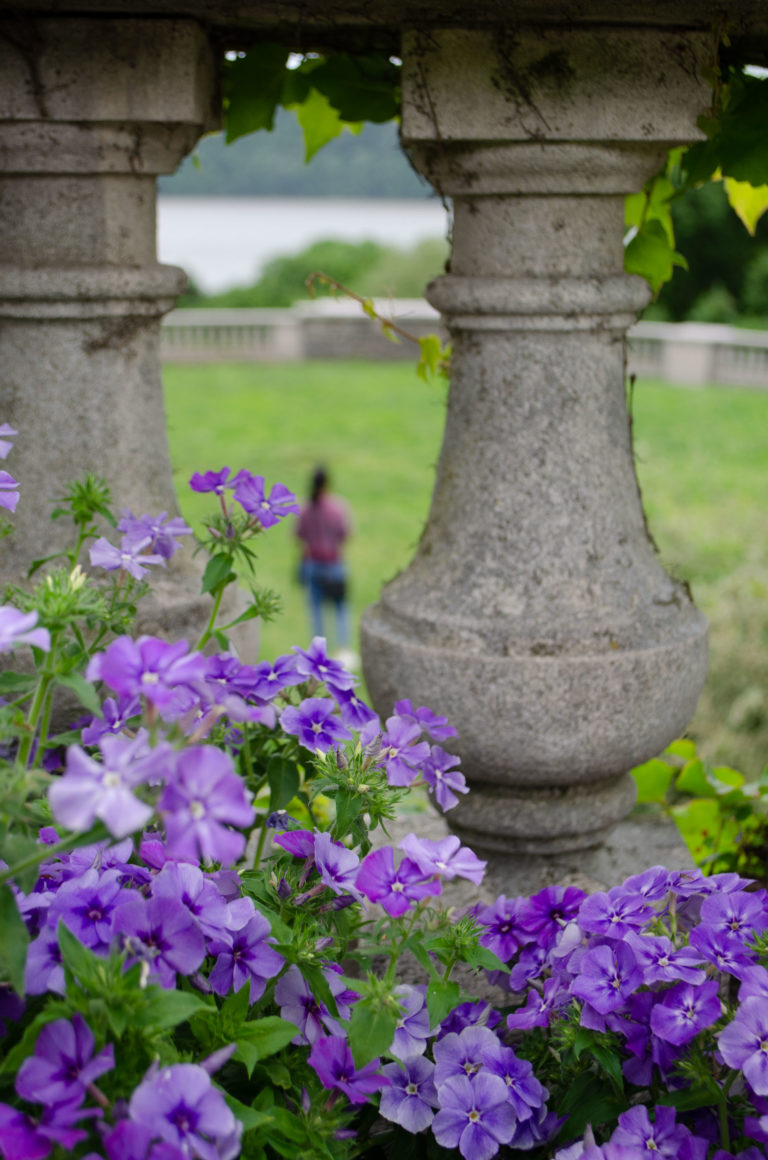
Early to Bed, Early to Rise
January 8, 2020Glorious displays of colorful tulips don’t happen at short notice. Planning begins in late summer and, although the Paisley Bed might seem bare right now, it is fully planted and ready for next spring—as the sign below indicates.

Tulip varieties—or more correctly, cultivars (cultivated varieties)—are classified into groups. Factors that define these groups include bloom time, stem height, flower shape (cupped or flared open), pointed or rounded petals and whether the flowers are single or double. This helps when planning and ordering for complex plantings. Coloration depends upon the exact cultivar and there are several hundred available in the trade.
The regular pattern creates an impressive effect, but a daunting prospect for the gardeners because the next stage is planting. A total of 850 were planted by our John Nally Interns this year.


The cultivars chosen this year, in approximate order of bloom time, are ‘Christmas Dream’ (single early group), ‘Barcelona’ (Triumph group), ‘Princess Irene’ (Triumph group), ‘Tom Pouce’ (Triumph group), ‘Design Impression’ (Darwin hybrid group), ‘Menton’ (single late group) and ‘Roi du Midi’ (single late group). The colors range from soft pinks, through fuchsia and carmine to bright yellows, and the result will be a slow-motion firework display of subtle, and deliberately not-so-subtle, color combinations as they unfold and mutate through the month of May.

Pine branches are placed over the soil surface for the winter. Although they act as insulation, they are not for warmth—bulbs don’t generate their own heat—but they do help to slow down rapid freezes and any quick thaws that might occur during the winter months. Bulbs do best if the soil remains evenly cool.

Tiny, blue-flowered violets (Viola) are also planned for spring. Trays of Viola Sorbet® True Blue are sheltering in the cold frames until the first thaw in March (or sooner, if the winter is kind), when they will be planted in the same bed. They will provide some much needed color early in the season before the tulips take over.
The Paisley Bed gets its name from the shape of its outline, which is very similar to the motif seen in the Paisley pattern. It is an example of a seasonal bedding scheme, meaning that the display changes from season to season. The spring display is followed by a warm-season planting, often featuring colorful tropical plants and flowering annuals, planted to a design based on a whimsical theme.
By Charles Day, Wave Hill’s Ruth Rea Howell Horticultural Interpreter



